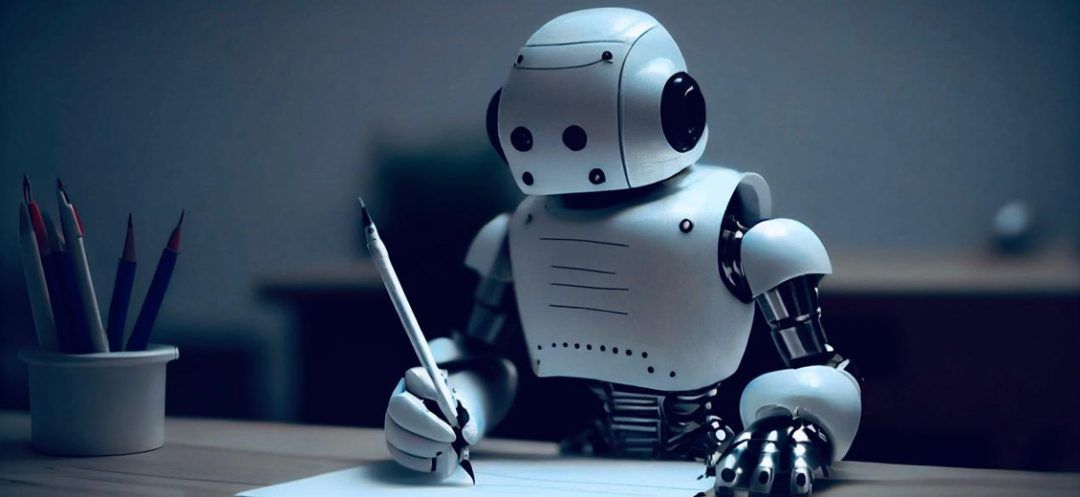
A new study finds that AI writing tools can enhance individual creativity but may lead to greater uniformity in stories across authors, presenting a social dilemma.
Artificial intelligence is increasingly being used to assist with creative tasks like story writing. While AI tools can help individuals generate more novel and enjoyable stories, a new study published in Science Advances warns that the widespread adoption of AI by the creative industries could lead to a decrease in the collective diversity and originality of books, movies, and other creative works.
The research, conducted by Anil Doshi of University College London and Oliver Hauser of the University of Exeter, involved around 300 volunteers who were assessed on their inherent creative ability and then split into three groups to write an eight-sentence story. One group received no AI assistance, the second was provided a three-sentence story idea from ChatGPT, and the third could receive up to five AI-generated story ideas.
The study found that on an individual level, AI boosted the quality of a writer’s creativity by up to 10% and the story’s enjoyability by 22%, particularly helping with elements like structure and plot twists. The effects were most significant for writers initially judged to be the least creative, suggesting AI has a “leveling the playing field” effect.
However, when looking at the stories collectively, those assisted by AI were much more similar to each other compared to stories produced without any AI help. The authors suggest this is because writers “anchored” themselves too heavily to the AI-suggested ideas.
This presents a social dilemma, according to the researchers. On one hand, AI tools can lower barriers and make it easier for more people to engage in creative activities. But if the collective novelty of art decreases as a result, it could be detrimental in the long run.
Doshi noted that just as introducing calculators to children too early can hinder their ability to learn basic arithmetic, there is a risk that people could become overly reliant on AI creative tools before sufficiently developing their own underlying skills in areas like writing and music.
“People need to start thinking about where in my workflow can I insert this tool to get the most benefit while still inserting my own voice into the project or outcome,” said Doshi.
As AI continues to advance and become more integrated into creative processes, striking the right balance will be key. If used judiciously, AI assistance could help more people express their creativity and produce high-quality work. But an overreliance on AI tools runs the risk of homogenizing creative output.
The creative industries will need to thoughtfully consider how to leverage AI to empower human creativity without sacrificing originality and diversity. Individual creators can benefit from selectively using AI tools to enhance their work, while still cultivating their unique artistic voice and vision. Finding the optimal human-AI collaboration will be an ongoing challenge and opportunity as these technologies evolve.
With AFP
Artificial intelligence is increasingly being used to assist with creative tasks like story writing. While AI tools can help individuals generate more novel and enjoyable stories, a new study published in Science Advances warns that the widespread adoption of AI by the creative industries could lead to a decrease in the collective diversity and originality of books, movies, and other creative works.
The research, conducted by Anil Doshi of University College London and Oliver Hauser of the University of Exeter, involved around 300 volunteers who were assessed on their inherent creative ability and then split into three groups to write an eight-sentence story. One group received no AI assistance, the second was provided a three-sentence story idea from ChatGPT, and the third could receive up to five AI-generated story ideas.
The study found that on an individual level, AI boosted the quality of a writer’s creativity by up to 10% and the story’s enjoyability by 22%, particularly helping with elements like structure and plot twists. The effects were most significant for writers initially judged to be the least creative, suggesting AI has a “leveling the playing field” effect.
However, when looking at the stories collectively, those assisted by AI were much more similar to each other compared to stories produced without any AI help. The authors suggest this is because writers “anchored” themselves too heavily to the AI-suggested ideas.
This presents a social dilemma, according to the researchers. On one hand, AI tools can lower barriers and make it easier for more people to engage in creative activities. But if the collective novelty of art decreases as a result, it could be detrimental in the long run.
Doshi noted that just as introducing calculators to children too early can hinder their ability to learn basic arithmetic, there is a risk that people could become overly reliant on AI creative tools before sufficiently developing their own underlying skills in areas like writing and music.
“People need to start thinking about where in my workflow can I insert this tool to get the most benefit while still inserting my own voice into the project or outcome,” said Doshi.
As AI continues to advance and become more integrated into creative processes, striking the right balance will be key. If used judiciously, AI assistance could help more people express their creativity and produce high-quality work. But an overreliance on AI tools runs the risk of homogenizing creative output.
The creative industries will need to thoughtfully consider how to leverage AI to empower human creativity without sacrificing originality and diversity. Individual creators can benefit from selectively using AI tools to enhance their work, while still cultivating their unique artistic voice and vision. Finding the optimal human-AI collaboration will be an ongoing challenge and opportunity as these technologies evolve.
With AFP
Read more



Comments